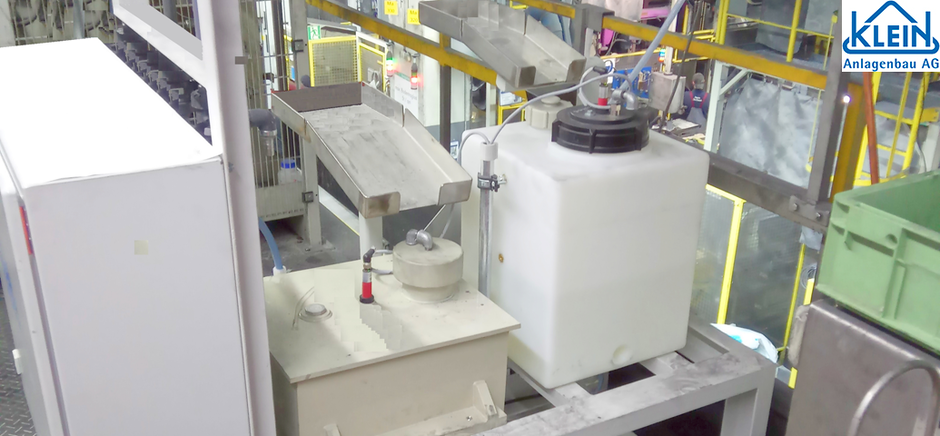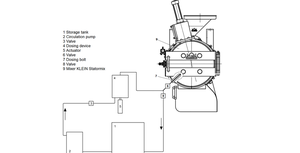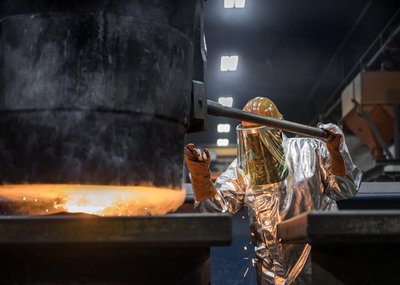In the past, companies prioritized economic success over environmental protection. However, today, environmental protection and economic efficiency are recognized as urgent necessities for preserving our livelihoods globally. As a result, industry now consistently incorporates environmental protection as a central aspect of economic activity in the development of innovative products. Consistent reduction of emissions is required by EU regulations, including the BREV process (Best Available Technique Reference Process) and the new TA-Luft.
In the foundry industry, which is naturally energy and emission-intensive, there is a high pressure to save energy and reduce or even eliminate emissions. When liquid metal comes into contact with molding material and core, organic materials are often decomposed into harmful or even toxic reaction products. These emissions require increasingly complex measures to prevent these pollutants from escaping into the environment. Development in the reduction of pollutants for organic binder systems is constantly progressing. However, emission-free organic binder systems are unlikely to be available in the foreseeable future.
The situation is completely different with hot-curing inorganic binder systems based on water glass resp. sodium silicate. Inorganic binders of this type have no practically relevant emissions - at most a little water vapor is visible during casting. Odor development does not occur in any of the upstream process steps. Today, water glass binders have very good technological properties and there has also been great progress in addressing specific challenges, such as decoring. It was precisely the technological property of decoreability that was also the entry hurdle that had to be overcome in order to establish the inorganic binder system in a comparatively small foundry.
After intensive research and development, the foundry Hansgrohe SE, in collaboration with Reinsicht GmbH and KLEIN Anlagenbau AG, has taken a decisive step towards more sustainable production.
The award of the German Sustainability Prize 2024 underlines Hansgrohe SE's efforts in terms of sustainability. The internal production processes are also being optimized for sustainability step by step. In the current project, the focus was particularly on optimizing air quality and avoiding harmful hazardous substances and waste.
In extensive upstream test series, Reinsicht and Hansgrohe SE developed the binder system for the requirements of the core sand mixture. Minimizing the required binder amount, which are comparable to the level of organic binder, resulted in acceptable shooting behaviour and the avoidance of gas porosity and sink marks. Great importance was also placed on decoring, so that the existing shot blasting system designed for the organic binder could continue to be operated without any conversion measures and without the use of additional equipment.
The shooting machines were modified to suit the requirements of the inorganic binder with reasonable effort. Specifically, measures were taken to prevent the core sand mixture from drying out. The sand mixer did not require any adjustment for the actual mixing task. In comparison, the core shooter tools require the greatest amount of adaptation. With new products, the experiences gained so far are now incorporated into the new tool design. The process parameters for core shooting must naturally be adapted to the chemically and physically different binder system, but the cycle times are not significantly different. The storability of the cores in weather conditions with high humidity requires comparatively little additional effort.
Reinsicht has set itself the task of developing and providing eco-friendly binders based on water glass. "Protecting the environment is our duty, the economy is our interest" is one of the guiding principles in its development.
With the "BF" binder system, synonymous with "Best Fit", Reinsicht has launched a new, economical binder system on the market, which ensures safe, reproducible handling during dosing and mixing, comparatively easy decoring and acceptable casting surfaces. Good regenerability of the core sand used was also taken into account during development.
The binder system consists of three liquid components: glue, trimmer and additive, whereby a special combination of properties can be set with each of these components. This means that the core sand mixture can be individually adapted to the specific requirements of the different core geometries and production conditions with each mixer batch. Liquid dosing has the advantage that no residues accumulate in the mixer, which can lead to problems when dosing with powdered components. In addition, the quartz sand only generates a small amount of dust during the initial dosing phase, which further improves working conditions in the foundry.
In order to optimize the specific, desired properties of the binder, one of the three components, also known as slip or slurry in the ceramics industry, consists of an aqueous suspension that can contain up to 70% solids by mass. When at rest, the solids sediment and form a thixotropic slurry, which can, however, be dispersed again. The solid content naturally gives the slip abrasive properties.
The preliminary tests with a compulsory mixer and manual dosing of binder components with cups resulted in salable-quality brass casting production. However, it is now necessary to use the BF binder system in the fully automated mixing plant. To achieve this, a dosing test system was designed, set up, and tested extensively in the technical center of KLEIN Anlagenbau AG. The system was then integrated into the existing mixing and dosing system on site, in collaboration with Hansgrohe SE.
To meet the high demands for accuracy and reproducibility of the dosing quantity, specific solutions were required in the system technology due to two boundary conditions: settling of the solids and abrasiveness. To prevent settling, constant circulation of the suspension must be ensured. Additionally, homogenization of the slip was required after a long system shutdown. At the same time, the exact dosing of the suspension had to be available quickly and immediately on demand, in a reliable and reproducible way. Dosing devices like gear pumps are unsuitable here, as mechanical components sliding against each other will fail within a short time under the influence of the abrasive properties of the slip.




